BIODIVERSITY IDENTIFICATION, EVALUATION AND MONITORING
9 February to 2 March 2004
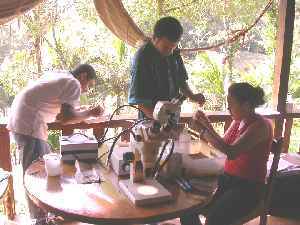
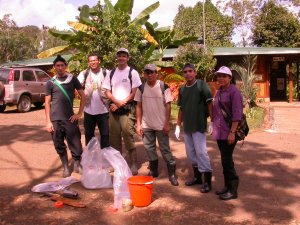
The course covered a wide range of topics relevant to biodiversity conservation. Participants learned about sampling methodologies, insect inventory and identification, protected areas, plant inventory and identification, landscape and community characterisation, biodiversity database management and the analysis and interpretation of biodiversity data.
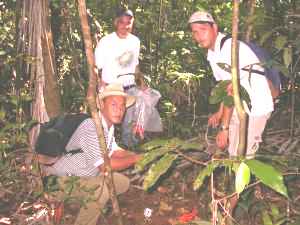
A field trip to the project area in the north of Costa Rica provided training in insect and plant inventory methods. Participants were principally NGO staff from the San Juan area of northern Costa Rica and southern Nicaragua.
BIODIVERSITY IDENTIFICATION, EVALUATION AND MONITORING
February 2005
The second 'Identification, evaluation and monitoring of biodiversity' course was held in February 2005. The course was held in the Refugio Bartola, Nicaragua, a private reserve on the edge of the Reserva Indio Maiz, both of which form part of the Mesoamerican Biological corridor. The course covered both the theory and practise of biodiversity assessment. The general objective of this course was to strengthen knowledge and capacity of personnel from NGOs, GOs and academic institutes in Nicaragua and Costa Rica in the evaluation, conservation and management of natural forest biodiversity. Fifteen trainees attended the course from a variety of Nicaraguan and Costa Rican NGOs, academic institutions and government organisations.
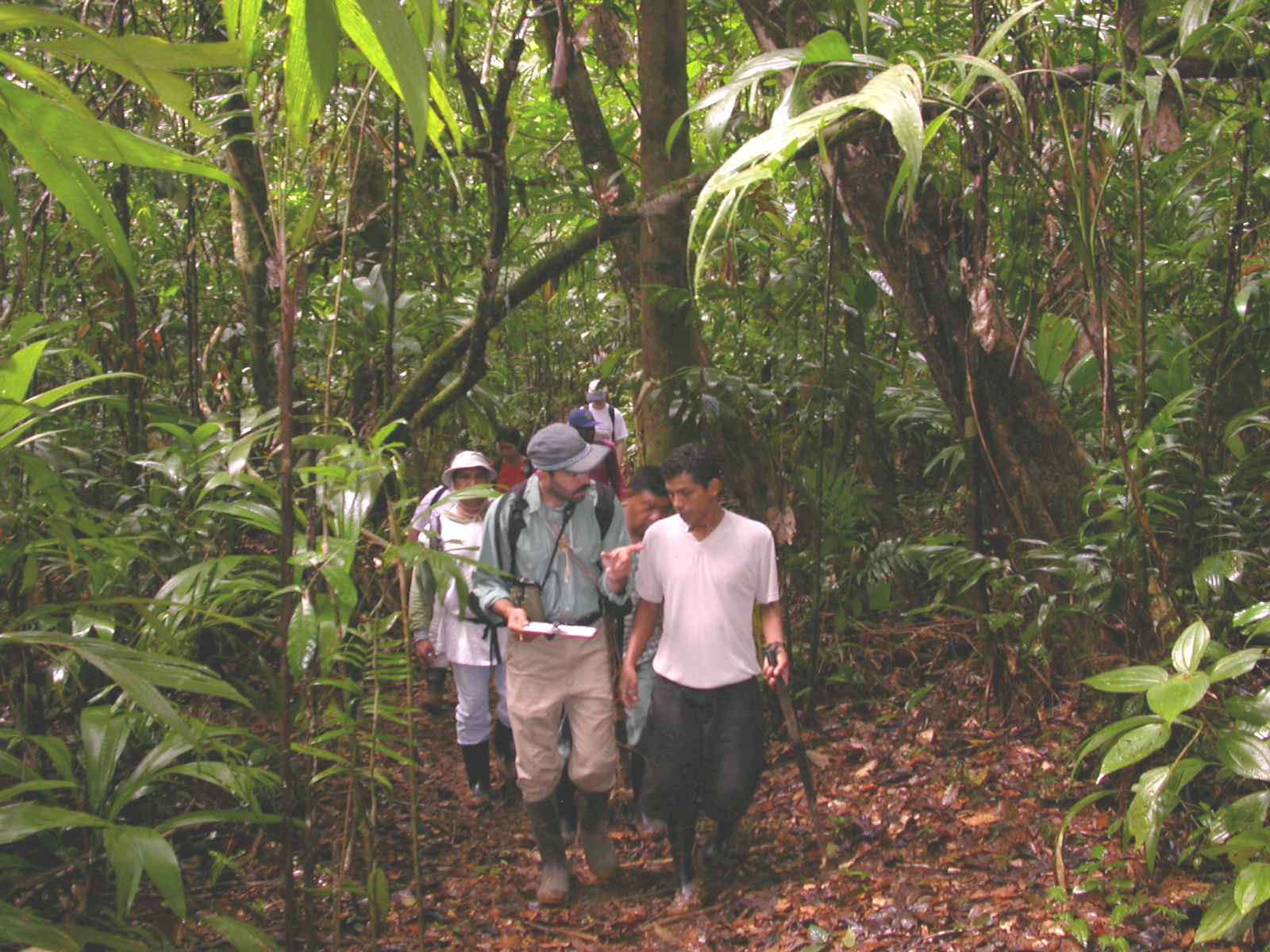
Plant diversity
We utilised the Alwyn H. Gentry Forest Transect methodology to collect data on plant diversity in the Refugio Bartola. The course participants and instructors carried out a field assessment of the area before selecting two distinct forest areas (based on botanical and topographical criteria). We then laid three principal transects of 100 m, in each of the two areas, and then 10 sub-transects of 50 m separated by 10 m were laid perpendicularly to the principal transects. In each of these sub-transects all individuals with a diameter at breast height (DBH) greater than 2.5 cm found within 1 m either side of the transect were measured. For each new morphospecies a sample was collected and labelled numerically. In total we measured and identified 1549 plants of 278 species. Within this inventory we found 12 species of plants which were new records for Nicaragua and had not been included in the recently published Flora of Nicaragua (Stevens et al. 2001). These findings are very important within the context of the Mesoamerican Biological Corridor and the Rio San Juan Basin. Our plant inventory has produced some of the first data on plant diversity within the buffer zone of the Reserva Indio Maiz. Students were given lectures and practical sessions on plant identification and in the analysis of biodiversity data.

Insect diversity
The dung beetles (Subfamily Sacarbaeinae) are diverse, vary from generalists to specialists and are known to be sensitive to environmental variation. These attributes make them useful as indicators of forest condition (Klein, 1989, Weaver 1995). In addition, dung beetles are relatively easy to collect, and are taxonomically well known. Many of the dung beetle species found in the broad area of the project also have existing ecological information (Solis, unpublished). Within the context of the project we sampled dung beetles in the Refugio Bartola in order to assess the insect diversity of the area and also to teach the course participants the methodologies for doing this. In order to sample the dung beetles, we utilised the transects laid for the botanical assessment. In each of the two forest areas sampled we utilised the three principal transects as guides and laid 20 sample points separated by at least 40 m. At each point we set four pitfall traps in a 2 m x 2 m square and baited with pig excrement. The traps were left for 48 hours. The beetles collected were identified to species. In total we collected 1666 individuals of 26 species. The course participants were instructed in standard methods of biodiversity analyses and using these statistics produced a final report.
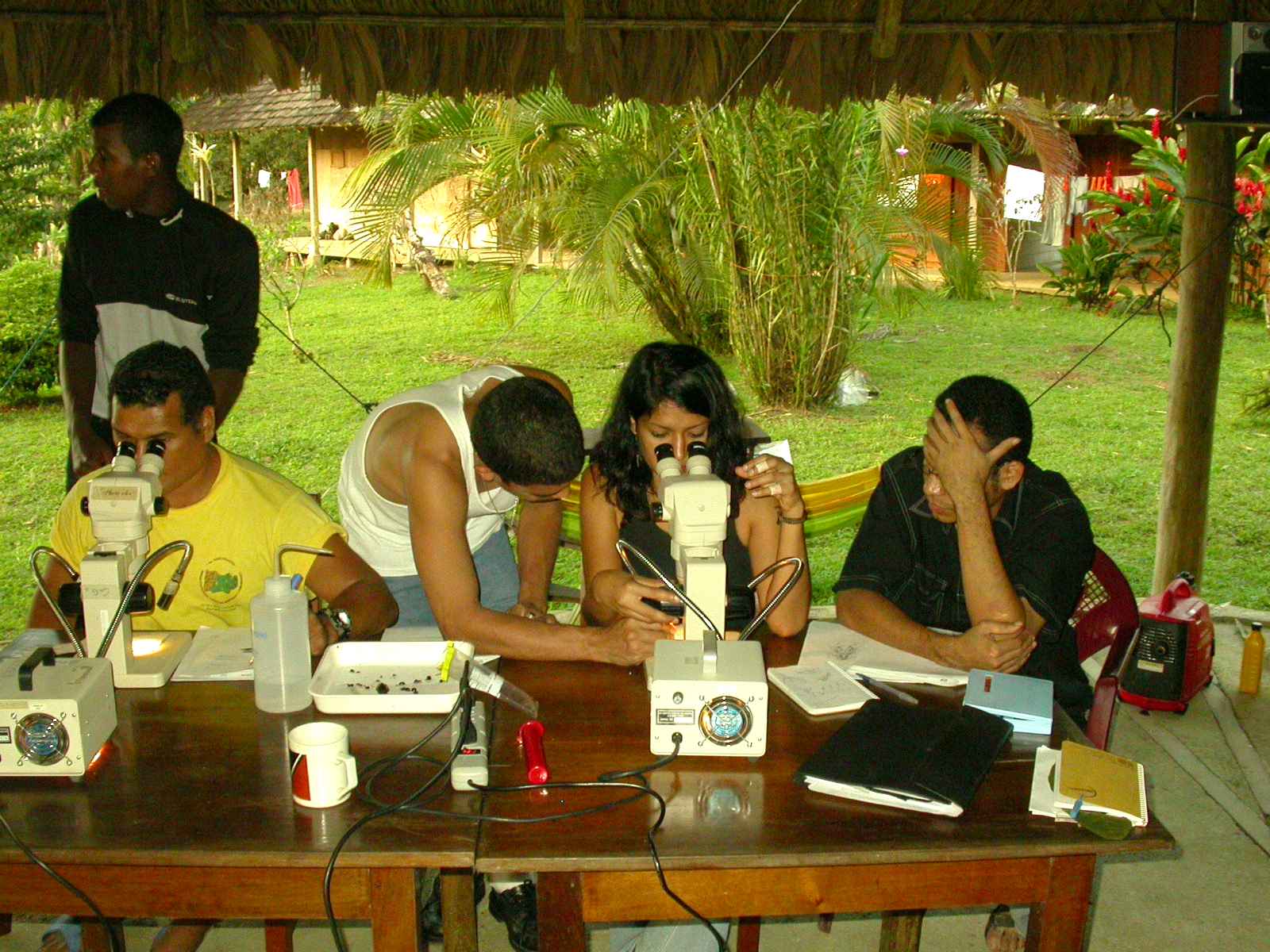
In addition to capacity building courses the project is also collecting biodiversity information in the Rio San Juan/San Carlos area of Costa Rica, specifically within the area of the proposed Maquenque National Park. Both plant and insect species are being collected.
During Year 2 of the project, we have carried out 12 field trips to Maquenque in order to undertake inventories of plant and insects. A total of 3769 dung beetles (Subfamily Sacarbaeinae) have been collected and most identified to species level. The plant inventory has resulted in a plant species list for the area of 704 species. In the second year of the project 78 species have been added to the species list for the area and seven rare species have been collected that were previously unknown in the area. Abuta steyermarkii (Menispermaceae), Dalechampia osaensis (Euphorbiaceae), Ruellia golfodulcensis (Acanthaceae), y Henriettea succosa (Melastomataceae) had previously only been recorded in the Osa Peninsula, an area in the south east of Costa Rica. The discovery of Arsistolochia gorgona (Aristolochiaceae), Ilex hemiepiphytica (Aquifoliaceae) and Miconia pterocaulon (Melastomataceae) in the project area indicates a wider distribution of these rare species than was previously known. In addition two species new to science have been discovered in the area. The first has been described and named Symplocos striata (Symplocaceae)(Kriebel and Zamora, 2004). The second is a new species within the genus Lonchocarpus and is currently being described.